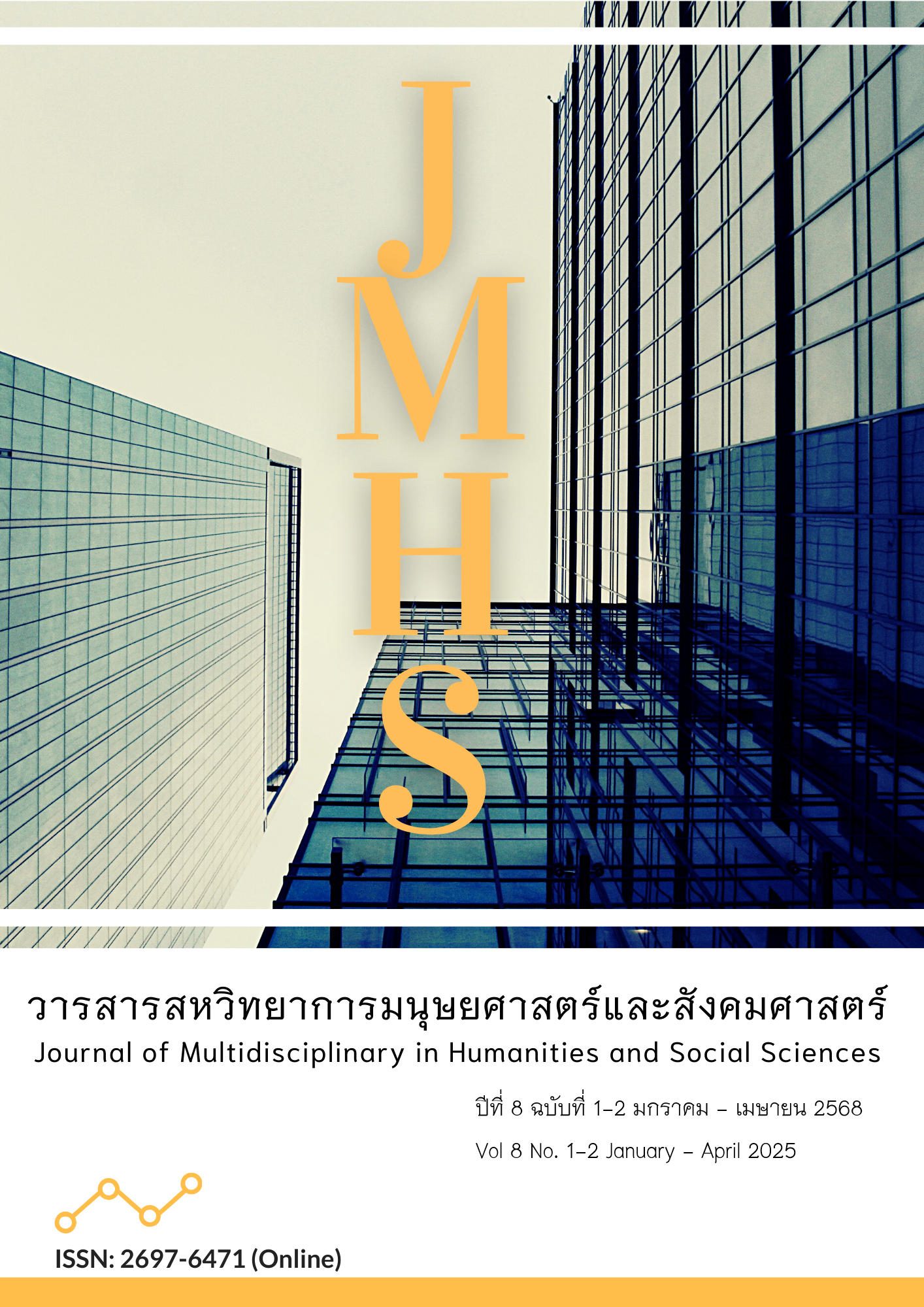The Role of Qin Zheng in the Development of Guzheng During the Tang Dynasty
Main Article Content
Abstract
This article aimed to study (1) Is the Qin Zheng the origin of the guzheng? (2) The history of the Qin Zheng (3) The role of the Qin Zheng in the development of the guzheng in the Tang Dynasty. (4) The development of the Qin Zheng. The samples are the history of the guzheng. They conduct research through ancient documents that have been preserved to this day and historical sites that have been excavated. The tools used to collect the data are the literature books, the Internet information and the author's ten years of experience in teaching the Guzheng. The results of the research after analyzing the historical content of guzheng are as follows:
1. Research results show that there is no doubt that the Guzheng originated from the Qin nation and was passed down during the Qin Dynasty. It gradually absorbed the unique musical styles of the region, specializing in playing mournful, desolate, and full of longing music
2. The Qin Zheng played an important role in the court music of the Tang Dynasty and spread to neighboring countries with cultural exchanges. Especially in Japan, the Qin Zheng has been integrated into the national music and has become one of the national musical instruments of present-day Japan.
3. The Guzheng, which originated in the Qin region of Shaanxi, also declined in the same area. However, in the early 20th century, through the efforts of Shaanxi Guzheng performers and experts, the Qin Zheng was re-established, allowing the Guzheng to return to its birthplace and begin to develop and be passed down once again. By learning from past experiences and preserving the traditions of folk music, and by rooting itself in folk music, the Guzheng has been able to flourish and bloom anew.
Article Details

This work is licensed under a Creative Commons Attribution-NonCommercial-NoDerivatives 4.0 International License.
Views and opinions appearing in the Journal it is the responsibility of the author of the article, and does not constitute the view and responsibility of the editorial team.
References
Cai, W. (2019). Ruminations on the historical trajectory of the revival of Zheng music in Shaanxi(Master's Thesis). The Province China Conservatory of Music. Retrieved from https://d.wanfangdata.com.cn/thesis/D01833228
Chao, X. (2016). On the artistic characteristics of “Huan Yin and Bitter Yin” in the Shaanxi Zither school. Shaanxi province. Journal of The Voice of the Yellow River, 23, 139-140. https://doi.org/10.19340/j.cnki.hhzs.2016.23.098
Chen, L. (2012). Tracing the evolution of the Tang Zheng in poetry. Journal of Musical Instruments, 3, 50-53.
Cheng, T. (1996). Introduction to the Japanese Koto instrument. Shaanxi province. Journal of Jiao Xiang-Journal of Xi'an Conservatory of Music, 3, 16-17. https://doi.org/CNKI:SUN:JXXA.O.1996-03-004
Cui, W. (2010). Qin Zheng and the Shaanxi school of Qin Zheng(Master's Thesis). Xi`an Conservatory of Music.
Jiao, W. (2002). History of the Qin Zheng. Beijing: China Federation of Literature and Arts Publishers.
Li, s. (1975). Jian Zhu Ke Shu. Tianjin: Tianjin People's Publishing House.
Lu, D., & De, G. (1992). Talk about Zheng. New Sounds of Music: Journal of Shenyang Conservatory of Music, 10(3), 40-44.
Qi, J. (2020). A primary exploration of the origin and flow of the Chinese Guzheng-taking the unearthed Zither as the main object of research(Master's Thesis). Shenyang Conservatory of Music.
Wei, J. (2007). Three evidences for the origin of the Qin Zhengr - questioning the suggestion that the Guzheng originated in the Yuezhi and Grew in the west. Journal of Chinese Music, 4, 83-85. https://doi.org/10.3969/j.issn.1002-9923.2007.03.014
Xiang, Y. (1993). Archaeological discoveries and the Qin Zheng Saying. Journal of the Central Conservatory of Music, 4, 58-64. https://doi.org/10.16504/j.cnki.cn11-1183/j.1993.04.010
Xu, Y. (2016). Musical instruments in Sui Shu-Music Zhi, Northern Music, 36(24), 2. Retrieved from https:// www.cnki.com.cn/Article/CJFDTotal-BYYY201624008.html
Zhai, y. (2015). Shaanxi Qin Zheng historical examination. Journal of Shaanxi Education, 11, 8-9. https://doi.org/10.16773/j.cnki.1002-2058.2015.11.003
Zhang, X., & Ting, L. (2012). The book of poetry was the mainstay of instrumental music in the Pre-Qin period. Journal of Liaocheng University: Social Science, 2,1-6. https://doi.org/10. 16284/j.cnki.cn37-1401/c.2012.02.003
Zhao, Y. (2018). A preliminary study of the Koto and its trajectory of transmission from east to Japan(Master's Thesis). Shanghai Conservatory of Music.

